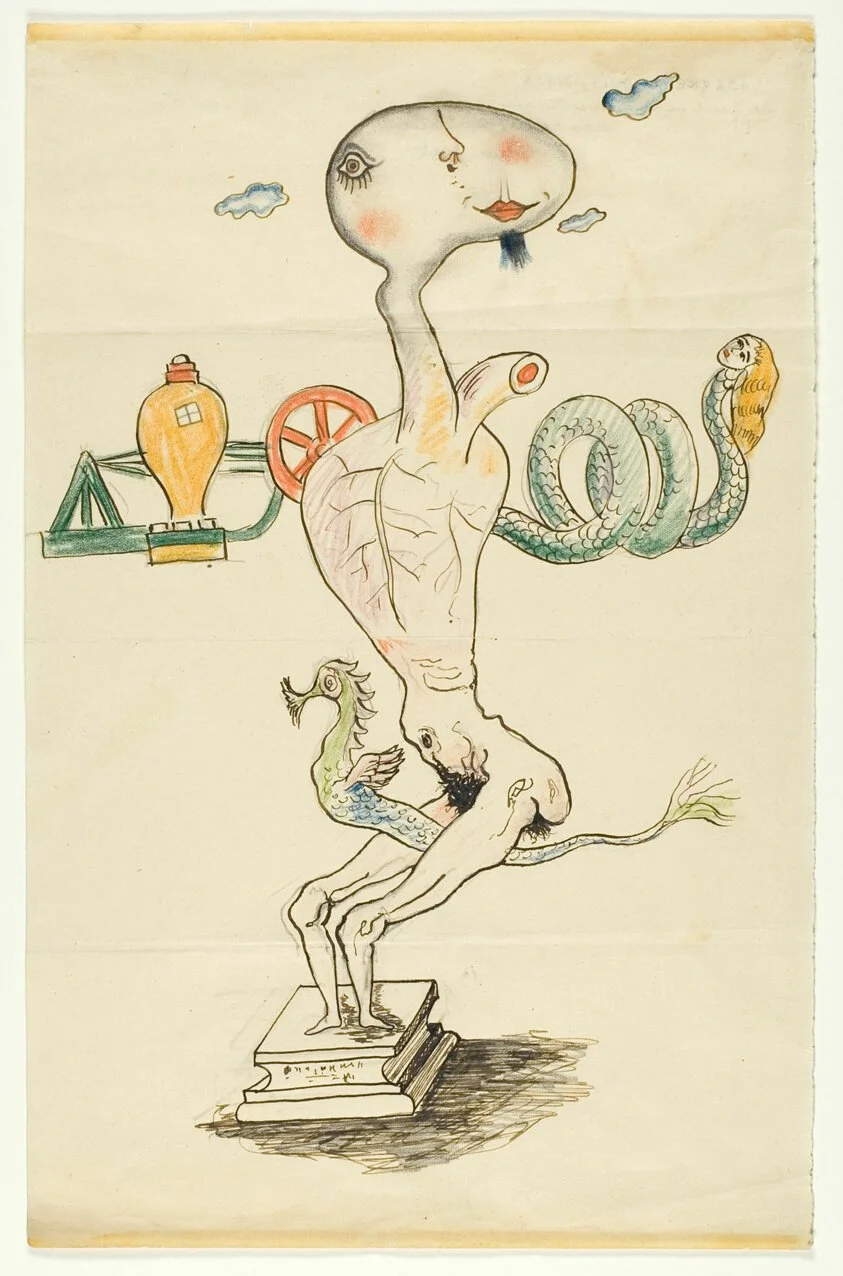3 Drawing Exercises to Get the Creativity Flowing!
When I started art school at 18, I had no formal training and very little technical knowledge or skill. I had always enjoyed creating things - whether it be drawing characters or making beaded friendship bracelets or doodling endlessly during school. But I took a big leap of faith deciding to pursue fine art in college.
Early on, I took a drawing class that truly changed my life. It transformed how I viewed the world, now through the lens of an artist. I learned about things like negative space, and experimented with new, wild techniques. There was a lot of “trusting the process”. It was magical.
Today, I want to share a bit of that magic with you. We're going to delve into three fun techniques that not only hone your artistic skills but also unlock the depths of your creativity: Blind Contour Drawing, Exquisite Corpse, and the Doodle Method.
1. Blind Contour Drawing: Blind contour drawing is a unique exercise that encourages artists to observe their subject matter more closely while relinquishing control over the outcome. This is a ton of fun to do with a friend, and requires zero foundational knowledge or experience. Not only will you end up with a unique art piece in the end, but I promise you the results will have you rolling on the floor in laughter.
Step 1: Select your subject. It could be anything from a vase of flowers to a portrait of a friend.
Step 2: Set up your drawing materials. A blank sheet of paper and a drawing utensil of your choice (pen, pencil, or colored pencil) are all you need.
Step 3: Keep your eyes solely on the subject and draw its outline without glancing at your paper, and don’t pick up your drawing tool! This may seem counterintuitive at first, but trust your instincts and let your hand follow the contours of the subject. Go slow, making sure to capture each component that you see.
Step 4: Once you've completed your blind contour drawing, take a moment to compare it to the subject. Embrace the imperfections and marvel at the unique interpretation your hand has created. It will be somewhat abstract, but still representative of the subject.
Need some guidance? Check out this video from the Museum of Modern Art.
2. Exquisite Corpse: Originating from Andre Breton, the leader of the Surrealist movement (think Salvador Dali and Frida Kahlo), the Exquisite Corpse technique is a collaborative drawing that sparks unexpected combinations and narratives. Check out these examples at MoMA in New York. Here's how to get started:
Step 1: Gather a group of fellow artists or friends who are eager to join in on the fun. You need at least 1 other person for this exercise, but it is even better with a group!
Step 2: Decide on a theme or subject matter for your Exquisite Corpse. It could be as whimsical as "fantastical creatures" or as abstract as "emotions."
Step 3: Each participant starts by drawing a segment of the composition without seeing what the others have drawn. Fold the paper to conceal your contribution, leaving only a small section exposed for the next artist to continue. It works great for figures (thus the name “exquisite corpse”, as each person can contribute a section of the body, starting with the head.
Step 4: Pass the paper around until every participant has had a chance to contribute to the Exquisite Corpse.
Step 5: Unfold the paper and revel in the delightful, often surreal, combination of styles and ideas that emerge from this collaborative process.
More of a visual learner? Check out this video!
Exquisite Corpse”, 1928, Man Ray, Andre Breton, Yves Tanguy, and Max Morise Credit: The Art Institute of Chicago
3. The Doodle Method: Doodling is not merely a mindless activity; it's a powerful tool for sparking creativity and relieving stress. Here's how to harness the doodle method:
Step 1: Begin with a blank canvas, whether it's a piece of paper or a digital drawing app.
Step 2: Start doodling without any specific goal in mind. Let your mind wander freely as your pen or stylus meanders across the canvas.
Step 3: Don't be afraid to experiment with shapes, lines, and patterns. Embrace spontaneity and allow your doodles to evolve organically.
Step 4: As you doodle, pay attention to any recurring motifs or themes that emerge. These subconscious elements can provide insight into your thoughts and emotions.
Step 5: Reflect on your doodle once you've finished. It may surprise you how much depth and meaning can be found within seemingly random scribbles.
Bonus Step: Much like finding shapes in the clouds, see what forms emerge from your doodles? Can you spot a dog and build on that base shape? Maybe it’s a tree, or a flower? See what you can create out of your doodles!
Whenever you are feeling stuck or uninspired, mix things up with one of these fun drawing techniques! These were monumental in my early days in art school, helping me to expand my creativity and try new things. Whether you are a seasoned artist or just starting your creative journey, these exercises will help you explore the depths of your imagination and let go of any preconceived notions of what your work “should” look like. Have fun!
For more art techniques and inspiration to get you out of creative ruts, sign up for our newsletter here!



